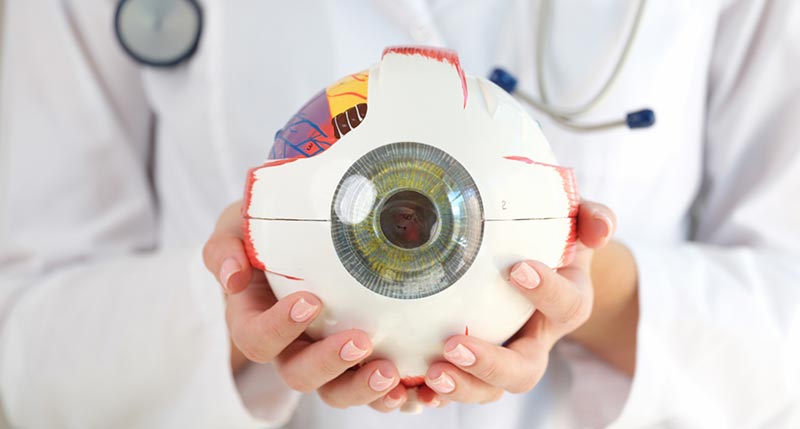Andalusia Eye Doctors: Specialist Ophthalmologists in Your Location
Andalusia Eye Doctors: Specialist Ophthalmologists in Your Location
Blog Article
The Pros and Cons of Different Refractive Surgical Treatments for Boosted Eyecare

LASIK Surgical Procedure
LASIK surgical procedure is a generally performed refractive procedure that aims to remedy vision concerns such as farsightedness, nearsightedness, and astigmatism. This medical strategy has gotten popularity because of its efficiency in offering clients with more clear vision and minimizing their dependency on glasses or get in touch with lenses. During the treatment, a slim flap is produced on the cornea, and a laser is used to reshape the underlying cells, remedying the refractive error. The flap is then rearranged, permitting quick healing and very little discomfort for the person.
One of the primary benefits of LASIK surgery is the rapid renovation in vision experienced by lots of people. It is crucial for people thinking about LASIK surgical treatment to undergo a thorough assessment by an eye treatment expert to determine if they are appropriate prospects for the treatment.
PRK Procedure
The PRK treatment, also referred to as Photorefractive Keratectomy, is a sort of refractive surgical procedure that aims to fix vision issues similar to LASIK surgical treatment. Unlike LASIK, which includes creating a flap in the cornea, PRK functions on the surface layer of the cornea. During the PRK treatment, the external layer of the cornea, called the epithelium, is eliminated to permit reshaping of the underlying corneal tissue with an excimer laser. This improving assists to correct refractive mistakes such as nearsightedness, astigmatism, and farsightedness.
One of the advantages of PRK over LASIK is that it gets rid of the risk of flap-related issues because no flap is developed during the surgical procedure. This can be helpful for individuals with thin corneas or those associated with call sporting activities where eye injury is a possibility. The recuperation time for PRK is generally much longer contrasted to LASIK, as the external layer of the cornea needs time to regenerate after the treatment. Despite the longer recovery duration, PRK can be an ideal option for individuals looking for vision correction surgical procedure.
SMILE Surgical Treatment
An advanced refractive surgical treatment technique obtaining popularity in the area of ophthalmology is SMILE Surgical procedure. Small Cut Lenticule Removal (SMILE) is a minimally invasive procedure that remedies vision by reshaping the cornea utilizing a femtosecond laser. Unlike typical LASIK surgical procedure, SMILE Surgical procedure includes developing a small incision in the cornea to draw out a lenticule, which results in much less disruption to the corneal structure and potentially quicker healing times.
One of the key benefits of SMILE Surgical procedure is its capacity to deal with nearsightedness (nearsightedness) and astigmatism with high accuracy, leading to superb aesthetic outcomes for patients. The minimally invasive nature of the treatment additionally reduces the threat of problems such as dry eye syndrome, making it a positive choice for people looking for refractive surgical treatment.

LASEK Method
Having checked out the advantages and considerations of SMILE Surgical procedure, another noteworthy refractive surgical treatment strategy worth checking out is the LASEK Method. LASEK, which represents Laser-Assisted Subepithelial Keratectomy, is a kind of laser eye surgery that aims to correct refractive mistakes such as myopia (nearsightedness), hyperopia (farsightedness), and astigmatism.
Unlike LASIK, LASEK does not include developing a corneal flap. Instead, throughout a LASEK treatment, the surgeon makes use of a diluted alcohol solution to loosen up the thin outer layer of the cornea, recognized as the epithelium.
Among the primary benefits of LASEK is that it can be ideal for people with slim corneas that might not be good candidates for LASIK. Furthermore, LASEK normally leads to very little post-operative discomfort and a quicker recovery time compared to PRK. However, the visual recuperation procedure with LASEK may be slightly longer than with LASIK.
Implantable Contact Lenses
Implantable Contact Lenses provide a long-lasting vision adjustment option for individuals looking for an option to traditional call lenses or glasses. These lenses, likewise called phakic intraocular lenses, are operatively placed into the eye to remedy refractive errors such as nearsightedness (nearsightedness), hyperopia (farsightedness), and astigmatism. cardiologist andalusia. Unlike traditional call lenses that rest on the surface area of the eye, implantable get in touch with lenses function within the eye itself, providing clear vision without the requirement for day-to-day maintenance or removal
Among the key advantages of implantable get in touch with lenses is their durability. Once put, they can continue to be in the eye forever, using consistent and secure vision improvement. In addition, these lenses can be a superb choice for people that are not excellent candidates for laser eye surgical treatment or that favor a relatively easy to fix vision correction procedure.
However, implantable get go to this site in touch with lenses do bring some risks, consisting of the potential for cataracts or enhanced eye stress. It is crucial for people considering this choice to seek advice from an eye care expert to figure out if implantable call lenses are the ideal option for their specific requirements and eye health and wellness.
Final Thought
In final thought, each sort of refractive surgical procedure has its own benefits and disadvantages. LASIK surgical procedure is popular for its quick recovery time, while PRK procedure might appropriate for people with slim corneas. SMILE surgery uses marginal discomfort during the treatment, yet LASEK method might have a longer healing process. Implantable get in touch with lenses offer an option for those that are not suitable prospects for standard surgical procedures. Patients need to consult with their eye care provider to establish the most effective alternative for their specific requirements.

Generally, SMILE Surgery provides an encouraging choice for people looking to improve their vision through refractive surgical treatment.
Report this page